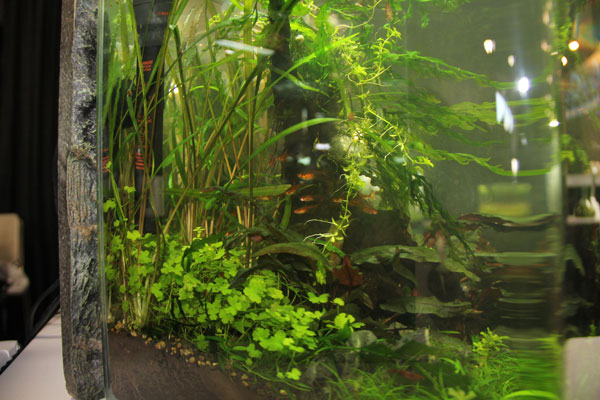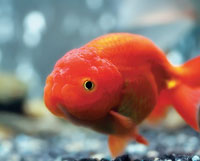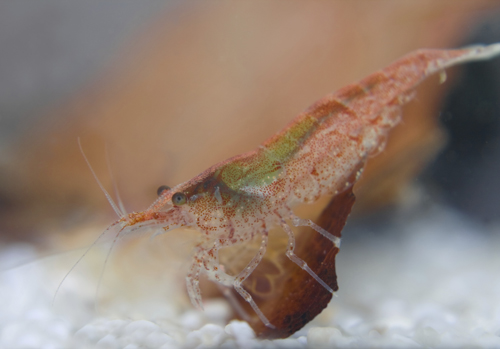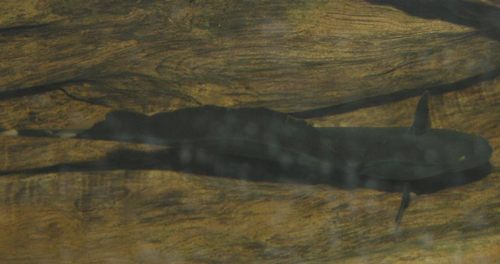
Pachypanchax killifish have few inhibitions about spawning in captivity. The easiest approach to breeding them is to house a number of pairs in a well-planted 15- to 20-gallon tank and feed them well. Unlike some killifishes, male Pachypanchax do not defend discrete breeding territories from which they court females. They instead attempt to monopolize access to ripe females as the latter move over the bottom in search of a suitable place to deposit eggs. With this mating system, as long as the number of females in a tank is equal to or greater than the number of males, the latter will coexist with minimal conflict. Like many other killies, Pachypanchax prefer to spawn shortly after dawn. Add a small amount of newly hatched brine shrimp to the tank’s feeding schedule a week to 10 days after the first bouts of spawning. As they appear, newly hatched fry will have a suitable food supply available to them.
When well-fed, adult Pachypanchax eat neither their eggs, nor newly hatched fry. Thus within six weeks to a month after the onset of spawning, the adults will be sharing their quarters with a small number of fry of various sizes. Young Pachypanchax do not share their parents’ inhibitions about dining within the family and will pick off newly hatched siblings as fast as they encounter them. The steady accumulation of fry thus stops after the first young to hatch grow large enough to efficiently indulge in sibling cannibalism. This “naturalistic” approach to breeding killies produces relatively few progeny per pair of adults. Killifish fanciers interested in maximizing fry output prefer setting individual pairs up in a breeding tank equipped with some sort of artificial spawning substratum from which they remove eggs to a separate hatching vessel on a daily basis. The fry are then moved into special rearing tanks as soon as they appear.
A single pair of well-fed Pachypanchax in a 5-gallon tank will produce up to a dozen eggs daily. However, it is unusual to find the full complement of eggs in the nylon strands of a yarn spawning mop. In nature, Pachypanchax appear to deposit eggs primarily in patches of coarse gravel. This preference for spawning on a solid substratum persists in captivity. Even if kept in a completely bare tank with nothing but a spawning mop, pairs will still deposit a few eggs in the tank’s corners.
Picking killifish eggs from nylon mops is time-consuming. However, there is a way to combine the advantages of the naturalistic approach with one that yields a more generous output of fry. One need only separate the sexes and feed them heavily for a week, then reunite them in a planted tank, and continue to ply them with their favorite live and frozen foods. After 10 days, remove the adults from the breeding tank and start feeding Artemia nauplii as soon as the first fry make an appearance. Keeping males and females apart for an interval prior to moving them into the breeding tank assures that a large number of eggs will be deposited within a relatively short period of time, while removing them after 10 days assures that the size differential between the first and last fry to hatch from those eggs will not be large enough to facilitate sibling cannibalism.
Depending on water temperature, Pachypanchax eggs hatch in 10 to 14 days. The fry are large enough to take newly hatched brine shrimp as their first food and grow quite rapidly. Within a week of hatching, they can take finely crushed flake foods and then chopped frozen bloodworms a week later.
Males can usually be recognized by their more pointed dorsal and anal fins between 10 and 12 weeks post-hatching, and the first traces of their adult color pattern usually make an appearance shortly after. I have seen 6-month-old males of P. omalonotus and P. patriciae actively courting females of comparable age, but these bouts of reproductive enthusiasm were not followed by the appearance of eggs. Both sexes of the five species I have bred appear to become reproductively functional somewhere between eight and 10 months post-hatching.
 Innovations in the Aquarium Hobby
Fishkeeping has experienced a lot of progress throughout the
Innovations in the Aquarium Hobby
Fishkeeping has experienced a lot of progress throughout the
 UV Sterilizers and Freshwater Discus Aquariums
Q. I have a 90-gallon freshwater aquarium that is bare-
UV Sterilizers and Freshwater Discus Aquariums
Q. I have a 90-gallon freshwater aquarium that is bare-
 Finding Fancy Goldfish
Trying to find nice fancy goldfish like this in stores c
Finding Fancy Goldfish
Trying to find nice fancy goldfish like this in stores c
 Setting Up a Freshwater Shrimp Tank
Shrimps are interesting aquatic animals that can be raised a
Setting Up a Freshwater Shrimp Tank
Shrimps are interesting aquatic animals that can be raised a
 Choosing a Knifefish For Your Aquarium
The array of adaptations that have evolved in fish has resul
Choosing a Knifefish For Your Aquarium
The array of adaptations that have evolved in fish has resul
Copyright © 2005-2016 Pet Information All Rights Reserved
Contact us: www162date@outlook.com